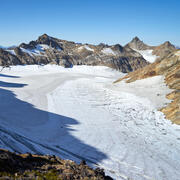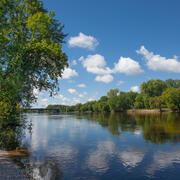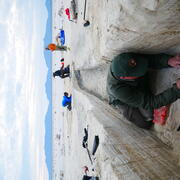Cryosphere: Earth’s Snow, Ice, and Permafrost
The Arctic and frozen lands are experiencing rapid changes and play large roles in infrastructure, natural resources, and regulation of global climate. The Ecosystems Land Change Science Program conducts research to improve our understanding of avalanches, permafrost, glaciers, and sea ice, and their response to changing climates in the past, present, and future.











